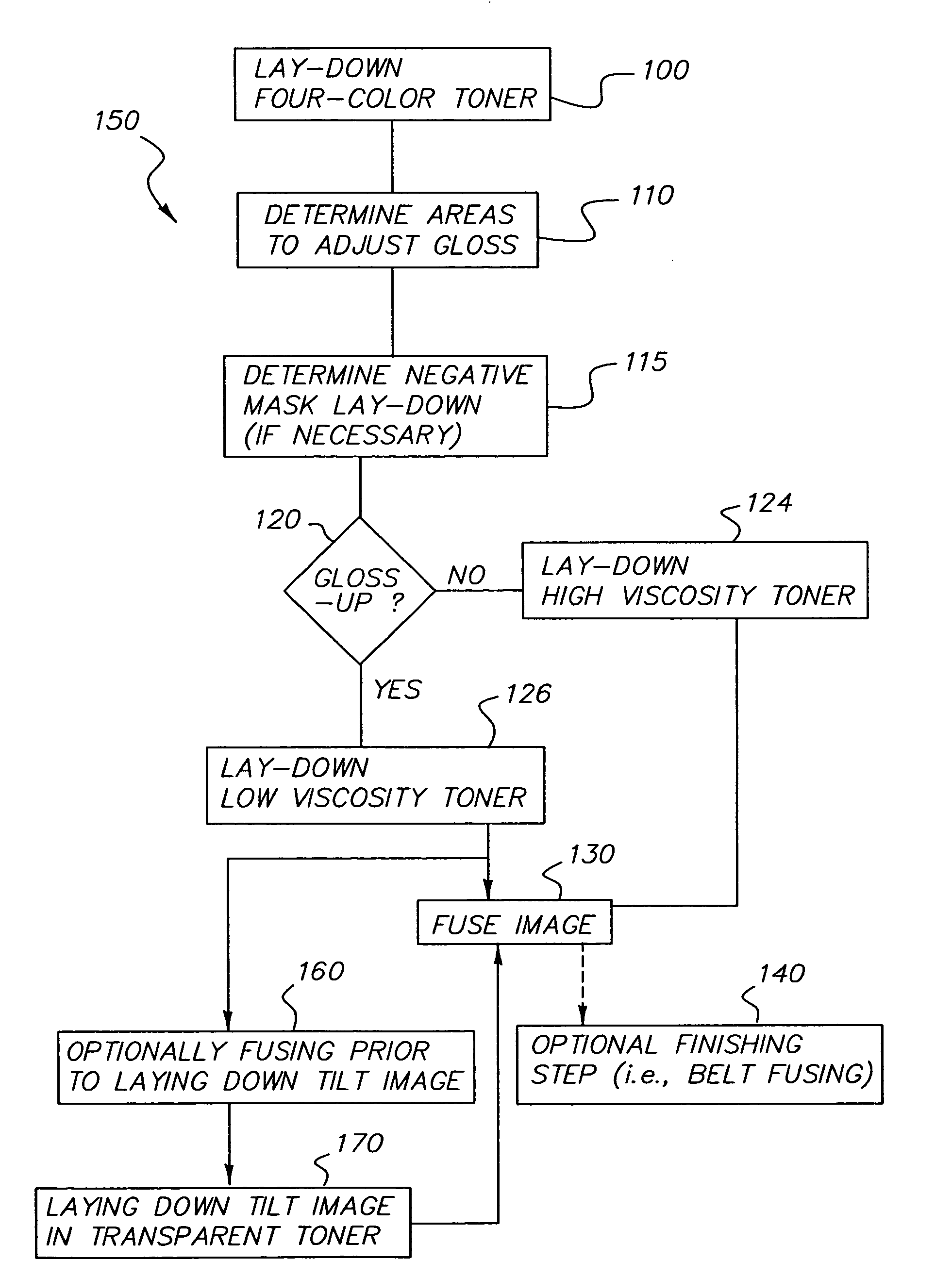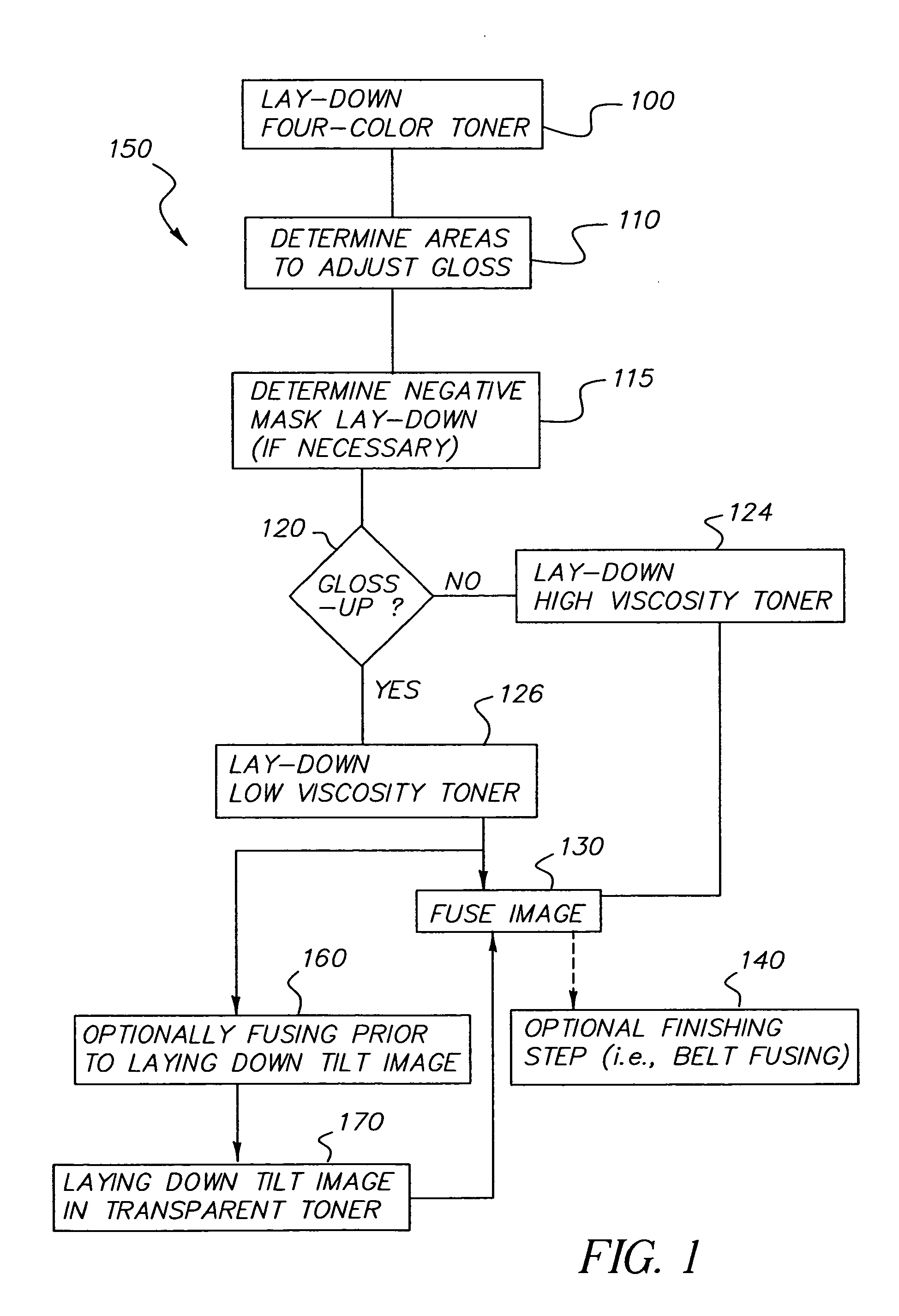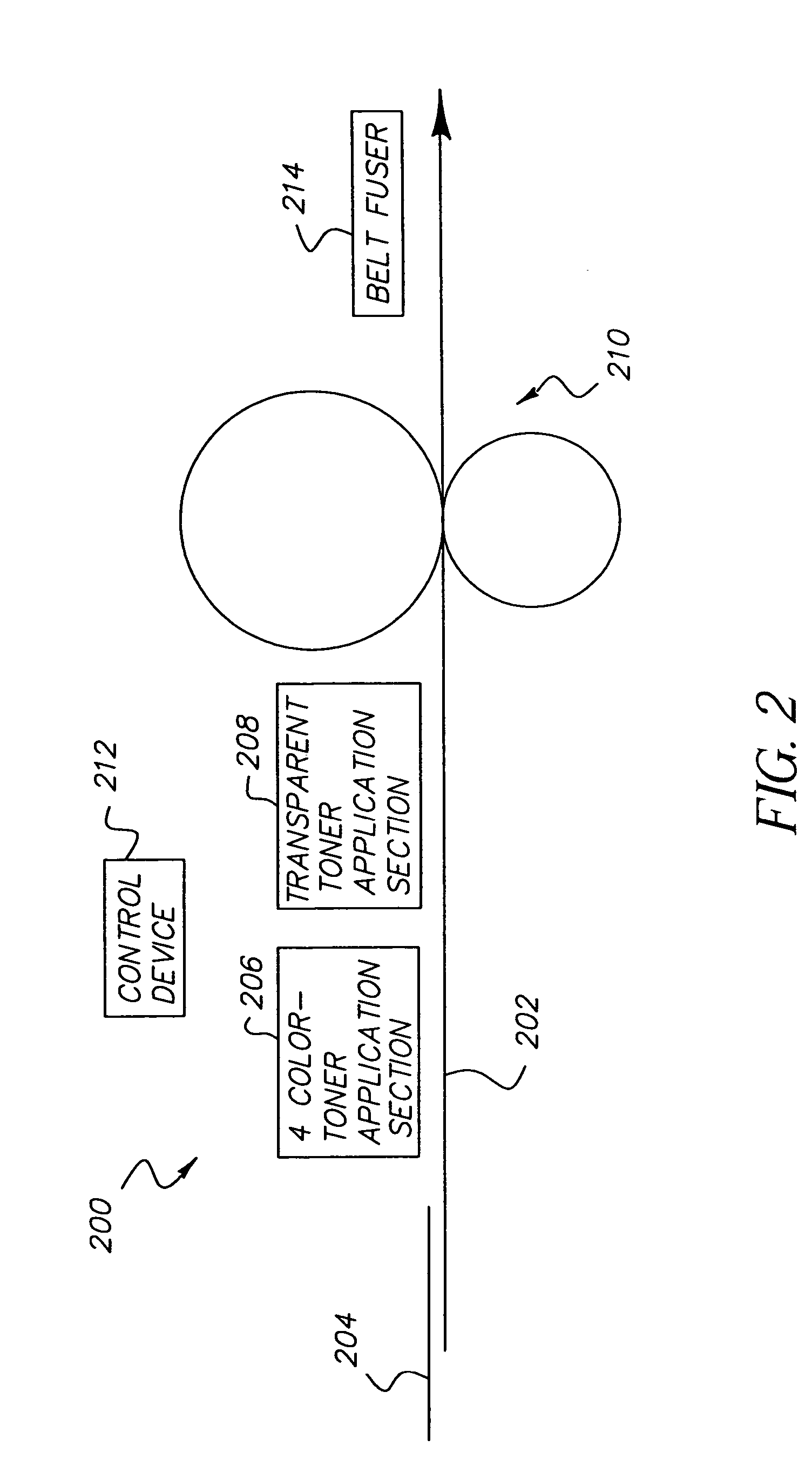Adjustable gloss control method with different substrates and 3-D image effect with adjustable gloss
a technology of gloss control and control method, which is applied in the direction of instruments, electrographic process equipment, developers, etc., can solve the problems of limited amount of gloss enhancement with the conventional fuser temperature control method, limited amount of gloss enhancement toner, and inability to adjust the gloss between various parts of the image, etc., to achieve spot gloss control, reduce differential gloss, and reduce viscosity
- Summary
- Abstract
- Description
- Claims
- Application Information
AI Technical Summary
Benefits of technology
Problems solved by technology
Method used
Image
Examples
example
[0049] Referring to FIGS. 9 through 13, there are shown two examples of a gloss-down transparent toner that may be used to reduce differential gloss on a printed page while still allowing for adjusted gloss within the page.
[0050] More specifically, FIG. 9 shows gloss level of an “untreated” image as a function of the total amount of toner lay-down. By describing the image as “untreated,” it is meant that the image has not been adjusted by any embodiment of the present invention. FIGS. 10 and 11 show the amount of gloss-down that may be achieved by adjusting the lay-down amounts of transparent toners 1 and 2 (Clear 1 and Clear 2), respectively using the color separation that has the maximum coverage at that pixel location as reference. FIG. 12 shows the reduction in differential gloss by using Clear 1 transparent toner as a function of varying amounts of toner lay-down. By comparing FIG. 12 to FIG. 9, it can be seen that the differential gloss may be reduced from about 25 (untreated...
PUM
 Login to View More
Login to View More Abstract
Description
Claims
Application Information
 Login to View More
Login to View More - R&D
- Intellectual Property
- Life Sciences
- Materials
- Tech Scout
- Unparalleled Data Quality
- Higher Quality Content
- 60% Fewer Hallucinations
Browse by: Latest US Patents, China's latest patents, Technical Efficacy Thesaurus, Application Domain, Technology Topic, Popular Technical Reports.
© 2025 PatSnap. All rights reserved.Legal|Privacy policy|Modern Slavery Act Transparency Statement|Sitemap|About US| Contact US: help@patsnap.com



